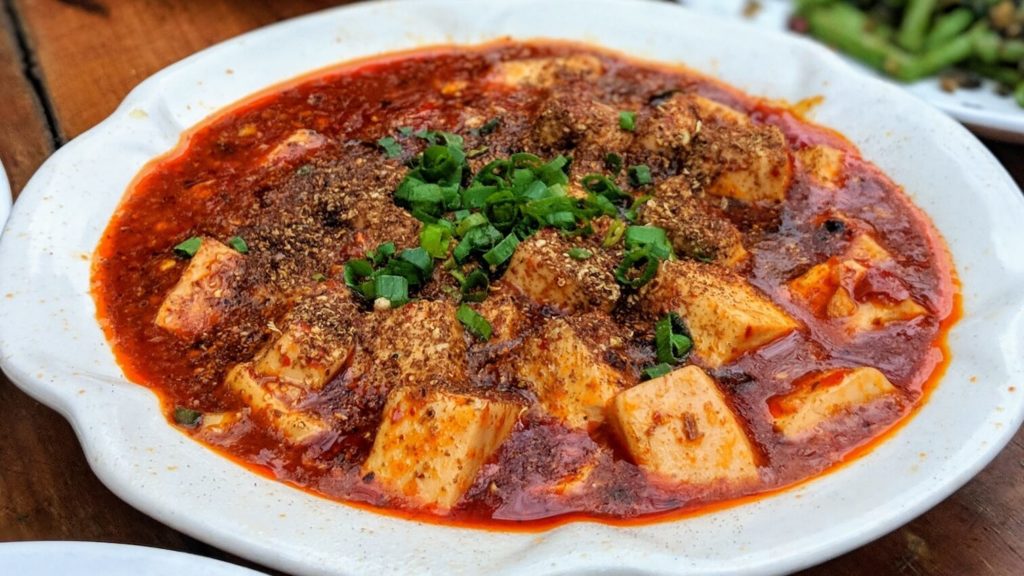Tofu is low-fat, high protein, high in iron, and 100 percent vegan. But the soy-based meat-alternative has a variety of other health benefits too.

What Is Tofu?
There are many varieties of tofu. A staple ingredient in East Asian and Southeast Asian cuisine, tofu has been consumed in China for more than 2000 years. In the mid-20th century, tofu and soy gained popularity in Western countries as a vegetarian health food.
The tofu production process involves coagulating soy milk and pressing tofu into blocks. This is comparable to the production of dairy cheese from milk, which also involves coagulation and pressed curds.
The exact methods of processing, along with the choice of coagulant, directly affects the texture of the finished product. The consistency of tofu varies between soft, firm, extra firm, and silken.
Different beans and different production processes can also impact the color and flavor of the tofu. Consumers in Western countries typically favor a mild, neutral flavor. Whereas in East Asia—and in traditional tofu production—a fuller and more bean-like flavor is preferred.
Tempeh production also uses processed soy products, but the result is a unique, bitter flavor. Fermented whole soybeans produce mycelium, and the resultant mixture forms a tempeh “loaf.” The fermentation of whole ingredients makes tempeh higher in protein and fiber than tofu. It also contains prebiotics that can support healthy gut bacteria.
Unfermented tofu contains approximately 11 grams of protein per 100-calorie serving. Whereas a 100-calorie serving of ground beef contains around 8.9 grams per 100 calories. The nutritional content of tofu makes it a good food source for those trying to boost their protein consumption.

The Health Benefits of Tofu
Research indicates that soy isoflavone—contained within soy protein—can help reduce “bad” cholesterol in the body. Various plant-based foods contain isoflavones, which some studies suggest may help reduce the risk of developing breast cancer.
A study carried out by scientists from the National University of Singapore, Cancer Research UK, and the US National Cancer Institute supports this theory that soy consumption has protective qualities.
New research by the Harvard Medical School and Brigham and Women’s Hospital in Boston indicates that eating tofu—and other plant foods rich in isoflavones—more than once a week could reduce the risk of heart disease by up to 18 percent.
In addition to being a good source of both protein and isoflavones, tofu also contains all nine essential amino acids. Depending on its ingredients and fortification, tofu may also contain calcium, as well as magnesium, copper, zinc, B1, and other key vitamins and minerals. Scientists have found that increased intake of isoflavones, manganese, calcium, and phosphorous all support higher bone density.
Several studies connect increased tofu consumption with a reduced risk of stomach cancer. One report, published in the Journal of Epidemiology, indicated that frequent soybean and tofu intake was “significantly associated” with reduced risk of gastric cancer.
Tofu also contains selenium, which could reduce the risk of prostate cancer. The Asian Pacific Journal of Cancer Prevention even suggests that selenium supplementation can be suggested for the “prevention of prostate cancer.” Tofu may even support healthy brain function, as soy products also contain lecithin, which supports the body’s production of vital chemicals.

How to Cook Tofu
Thanks to its mild flavor and variable consistency, tofu is extremely versatile. However, it can be challenging to cook for the very first time. For example, extra firm tofu may require a different approach to silken or extremely soft tofu. Medium-firm tofu often requires pressing at home, depending on the recipe in question, while some uses require additional water.
These seven top tofu dishes include both simple and advanced techniques.

1. Quick and Easy Crispy Tofu
This quick and simple recipe streamlines tofu preparation to around 25 minutes. Using extra-firm tofu and pressing it well makes for an extra crispy and easily adaptable cooking method. Pan-frying the tofu before putting it in the oven also makes for a crispier, golden brown appearance.
Get the recipe here.

2. BBQ Couscous Bowl
This BBQ couscous bowl includes pan-fried, firm tofu and is perfect for those mindful of tofu’s health benefits. While it doesn’t specify pressing the tofu before frying, this can help improve the texture. Combining soy protein with broccoli also makes for an extra high-protein dish.
Get the recipe here.

3. Tofu Chorizo
Guajillo, árbol, ancho chilies, and garlic turns crumbled tofu and mushrooms into this vegan chorizo. Crumbling the tofu with the mushrooms makes for a unique texture and nutritionally dense meal. The recipe author suggests making traditional potato and chorizo tacos.
Get the recipe here.

4. Simple Tofu Quiche
This tofu quiche combines extra-firm silken tofu, hummus, and nutritional yeast for a naturally “egg-like” flavor. For the correct texture, the tofu must be patted dry but not pressed. This quiche uses just 10 ingredients and is quick, high protein, and gluten-free.
Get the recipe here.

5. Vegan “Egg” Mayo Sandwich
This recipe combines firm tofu and silken tofu—which is undrained and unpressed—to recreate the texture of egg mayonnaise. Nutritional yeast and kala namak, also known as black salt, create the “eggy” flavor and can be adjusted for taste. Simple and delicious, this recipe is perfect for anyone trying to add more tofu to their diet for its health benefits.
Get the recipe here.

6. Spinach and Tofu “Paneer” Curry
Thanks to its mild flavor and smooth texture, firm tofu makes a handy replacement for paneer cheese. For this recipe, the tofu must well-pressed before cooking. While the cooking process itself is fairly simple, for best results marinate the tofu overnight.
Get the recipe here.

7. Vegan Braised Tofu Pork Belly
This “super meaty” vegan pork belly combines plant-based meat with fermented tofu, fat, and bread to recreate the layered texture of traditional meat. The sweet and salty peppercorn sauce makes this ideal with rice or noodles and is best topped with lime zest and fresh cilantro. This is an advanced recipe, but it’s well worth the additional effort.
Get the recipe here.


